Standpoint Theory and Eugenics

Interview by Richard Marshall
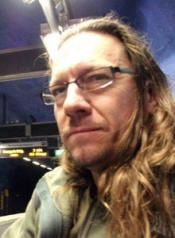
'Approaching eugenics from the standpoint of its survivors is important, in part, as a politics of rehumanization and respect. But it also gives us reason to ask fundamental questions we might otherwise not: How do we end up devising and implementing classification schemes for sorts of people that have such devastating effects?'
'Some, particularly those influenced by Foucault in the world of disability studies, go further and suggest that eugenics itself created and structured our concept of normalcy during the late nineteenth century... I think this further view is implausible and try to make a case for an account of the relationship between eugenics and normalcy that blends together social and psychological factors more than is usually done in the literature.'
'I came to know a small number of eugenics survivors in Alberta, including Leilani Muir, fairly well over the years, something that made my interest in eugenics more than academic. The flip side of that personalization was finding out that the founding chair of my then-department at the University of Alberta, John MacEachran, had run the four-person Alberta Eugenics Board from 1928 until 1965—i.e., for all of its history except the final seven years.'
'When you turn to the empirical literature featuring data on well-being and quality of life, the self-reports from people with disability depart from the widely held view that disability lowers well-being. This view simply isn’t true.'
'The idea is that incest avoidance comes about primarily (only?) through invented cultural rules, taboos.One reason to reject this view is that it rests on a false view of the nonhuman animal world.'
'I think that the dominant way of thinking about collective intentionality is mistakenly individualistic and individually demanding, and it’s not an easy matter to adjust that thinking just by lowering the bar, so to speak.'
'Collective memory work provides a powerful opportunity to include voices that have not only been left out or not heard, but those that one might assume don’t exist at all.'
'My thought was that if extended cognition was real, then it should be no different in kind than other sorts of extended biology.'
Robert A Wilson is interested in mind and cognition, biological science, eugenics and social science. For the past ten years or so, he has also led two large-scale projects in engaged philosophy that aim to integrate philosophical thinking more directly with community-based concerns. While they don’t have your standard academic output they do represent ongoing areas of interest. Here he discusses eugenics , standpoint theory, how eugenics developed, normalcy, human betterment, pro-social tendencies, the Alberta University eugenics scandal and Leilani Muir, the Sexual Sterilization Act, the Living Archives Project, Procreative Beneficence, disagreement with culture first, conventionalist accounts of social taboos, collective intentionality, collaborative memory, and extended cognition and the importance of noting the Lethocerus bug.
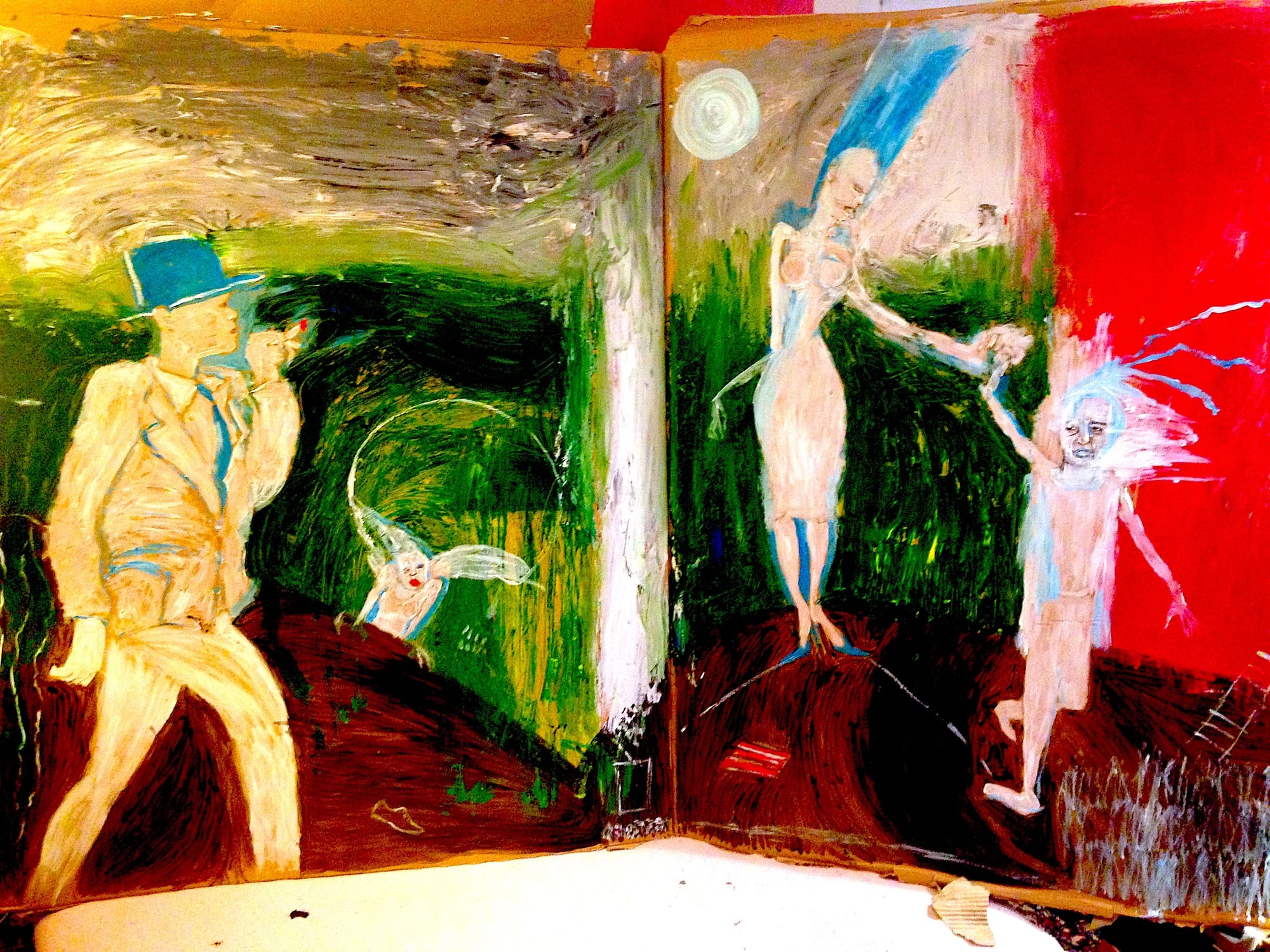
3:16: What made you become a philosopher – and why do you want to see it happening in schools?
Robert A Wilson: The short answer to the first question is fortuity. The slightly less short answer to the second is this: philosophy for children has an impressive track record in developing transferable thinking skills with significant transformative potential, especially for kids from marginalized backgrounds. But why settle for a short and a slight less short answer when there’s a story just around the corner?
The story of getting into philosophy is this. For most of high school, I wanted to be a journalist. I edited our local cricket magazine, “Stumps”, when I was 14, writing most of the content, learning how to touch type at school (1 of only 2 boys in the class), mastering the handcrank on a Gestetner, and becoming adroit with a stapler. But I lost my enthusiasm for journalism in my last year of high school and somehow was seized by the idea of becoming a lawyer. So that meant going to this place I had only a vague idea of, university. And in Perth, whose northern-most suburbs I half grew up in after my blacksmith-father and clerk-mother left the desert landscapes of Broken Hill in the outback of New South Wales for the rolling beaches of WA, that meant the University of Western Australia. But a funny thing happened on the way to law school. Two funny things, in fact.
The first was that on the way back from a school trip to the Perth CBD we ended up taking a detour through the UWA campus (which I’d never seen or knew much about), wandering around at first for a general sniff, then not only peeking into the back of a lecture theatre through a spyhole in the door but actually yanking the door open and scurrying to sit down at the back of the lecture theatre and listen to the lecture in progress. That lecture was an introduction to philosophy with a focus on critical thinking. I was mesmerized by the whole experience, but was also quite naturally excited (as one is) by the handout, which I took home and worked through. It was then that I knew that, when I took my requisite first year of university to get into law school, the one thing I’d be taking was philosophy. The second was that, early in that first year of uni, I met a bunch of law students. Very clubby, all private school educated, all from professional families (lawyers, doctors, business owners), and clearly sizing you up for your background from the get-go. Let’s just say that experience pretty quickly drained my enthusiasm for a career in law.
So philosophy it was! During my third year at UWA, I discovered philosophy for children, again through happenstance. Ann Margaret Sharp, one of the founders of philosophy for children, was visiting the campus and I ended up spending some time chatting with her after her talk. Here she pitched the program in philosophy for children they had at Montclair State (then College, now University) in New Jersey. But UWA also had Michael Scriven tucked away in the Faculty of Education. A long conversation with him about doing philosophy in schools made me think that heading over to work with Sharp and Matthew Lipman in New Jersey, once I graduated, was a good idea. So I spent a couple of months there early in 1986, where I worked with teacher trainers in about 50 classrooms doing philosophy for children. That experience confirmed my gut feeling that philosophical dialogue was an important tool for motivating children to be better learners and for providing key skills for their becoming so.
After working as a computer programmer and (separately) with kids and teachers for a year or two back in Perth, I decided that going to graduate school—this other thing I had only just heard of—would be the way best to consolidate this pseudo career pathway in philosophy in schools. So I went off to the US (again) to do my doctorate. Not to become an academic philosopher but a more credible philosopher in schools, once I returned to Perth.
There’s a sense in which that vision has become real—just 30 years later than I had naively expected. I have recently returned to UWA with a mandate to infuse philosophy into the larger community. That will involve some work with PEiPL (Philosophical Engagement in Public Life), a group I started two years ago in Melbourne, and some with philosophy in schools and with youth more generally. I am really looking forward to it. Anyone interested should get in touch.
3:16: One of the areas you’re interested in is eugenics. You examine it from the standpoint of the survivors. Why did you do that, given that as you yourself note, standpoint theory in the social sciences and humanities is controversial? What is this theory, and how do you get round the issue of unavoidable ethnographic intrusion that presumably follows from the theory?
RW: My interest in eugenics has shallower and deeper origins.
The shallower one is that I regularly taught a class at the University of Illinois, “Biology, Society, and Values”, that had a couple of weeks in it on eugenics. Basically, one on how bad the Nazis were and one on how the Americans were nearly as bad. Teaching that class and others in the philosophy of biology was part of how I came to add philosophy of biology to my areas of specialization, having focused on the philosophy of mind and cognitive science for my first 5 years post-PhD.
The deeper one came out of my experience in teaching those classes once I moved to Alberta in 2000, where I discovered that eugenic sterilization had been practiced in Canada until 1972. More strikingly, I learned that several students in my class of 35 or so had immediate relatives who had been sterilized under The Sexual Sterilization Act of Alberta. I soon came to meet some of Alberta’s eugenics survivors, who were then invited to guest lecture in those classes. We hung out quite a bit and through my emerging friendships with a handful of them over time, I came to see eugenics in a more personal way.
So one reason why I ended up approaching eugenics from the standpoint of survivors is that it reflected my own learning curve. Two of the things I was most struck by, and still am, is how familiar the background of eugenics survivors was, given my own background, and how fully human their stories made them. They really weren’t that different from the people I grew up around. In fact, sitting around yakking over tea and biscuits with Leilani Muir in her trailer house outside of Edmonton reminded me of much the same with my grandmothers in Broken Hill, except we played cards a lot more in the Hill. Yet Leilani and other eugenics survivors had been classified as “morons” and as “mentally defective” and institutionalized and sterilized in accord with that.
Approaching eugenics from the standpoint of its survivors is important, in part, as a politics of rehumanization and respect. But it also gives us reason to ask fundamental questions we might otherwise not: How do we end up devising and implementing classification schemes for sorts of people that have such devastating effects? What makes us confident enough in our judgments about better and worse kinds of people to direct social policies governing who can and can’t have children? What is the scientific basis of psychiatric and other mental classifications of people? I like to think of asking such questions as at least a little bit philosophical in nature, even if philosophers have not often asked them.
One of the chief claims of standpoint theory is that those most deeply marginalized by a practice or system are in the best epistemic position to provide insights into how it really operates. But standpoint theory itself has more built into it than that. I end up being somewhat skeptical about whether standpoint theory really has the resources to have the positive impact that it has had in accounts of race, class, and gender once we turn to the context of eugenics and disability. I’m not sure that this has to do with “ethnographic intrusion” so much as trying to adapt a view that is anchored (in Marx at least, but I think also in its 1970s revival in feminist thinking) in the dynamics governing opposed binaries—like the proletariat and the bourgeoise under capitalism, or female and male under patriarchy.

3:16: How did eugenics emerge as such a big force and how does it link with the emergence of the idea of normality?
RW: The general view of eugenics that historians, sociologists, and others accept is that it developed in the last nineteenth-century as the confluence of ideas of social progress with emerging scientific disciplines (such as psychology), technologies (such as sterilization and IQ testing), and relatively scientifically naïve, folk-ish ways of thinking about kinds of people (as racially fixed and as having inherent defects with a biological base). It’s important to recognize just how widespread support for eugenics was in the first third (or even half) of the twentieth-century across a variety of countries, something that historians have been documenting since at least Mark Adams’ The Wellborn Science: Eugenics in Germany, France, Brazil, and Russia (Oxford, 1990) and that partly structures the more recent Oxford Handbook on the History of Eugenics (2010) that Alison Bashford and Phillipa Levine edited.
At a fairly intuitive level, it’s pretty clear that the targets of eugenics were picked out as being subnormal in some way, an idea manifest in the case of putative disability, especially putative psychiatric or intellectual disability. Early twentieth-century panic about the “decline of the race”, a panic that one can still feel in the contemporary resurgence of openly-expressed racial hatred, migrant-o-phobia, and other evils of our time, also expresses this subhumanization. But some, particularly those influenced by Foucault in the world of disability studies, go further and suggest that eugenics itself created and structured our concept of normalcy during the late nineteenth century.
In The Eugenic Mind Project I explain why I think this further view is implausible and try to make a case for an account of the relationship between eugenics and normalcy that blends together social and psychological factors more than is usually done in the literature. A great place to get your feet wet here is Leonard Davis’s Enforcing Normalcy: Deafness, Disability and the Body (Verso, 1995), especially ch.2, which has been very influential.
3:16: The notion of human betterment and pro-social tendencies are also important aren’t they, and Eugenics point to the limitations of this perspective don’t they? What are the limitations and the dangers of this attitude and given that we hear a lot about newgenics, CRISPR , designer babies and all that stuff has eugenics come back with a vengeance – or did it never really go away?
RW: Human betterment is central to eugenics, though it alone doesn’t mark off eugenics in a distinctive way from other projects of melioration (e.g., transhumanism). Important to eugenics are two further ideas: that this betterment is intergenerational, and that it should be effected through changing the next generation to have more “fitter” people and/or fewer “less fit” people. This second idea itself rests on the assumption that there is some kind of objectively-based distinction between better and worse people, such that it makes sense to adopt policies that promote the reproduction of the former and discourage that of the latter. Even before all of that gets unpacked, one doesn’t have to be overly pessimistic about human nature to realize that implementing social programs and policies based on eugenic ideology is likely to be morally impositional and scientifically unreliable, a bad combination.
Although many eugenicists were (and are) racist, xenophobic, ethnocentric, or ableist, you don’t need to feed any of those problematic starting points into your eugenics to be on hubristic ground. The many imperfections in our best sciences of the day, in the proxies used to establish criteria for “better” and “worse” contributors to that next generation, and in the over-extension of technologies to solve social problems that have been documented in the eugenic past are more than warning signs for contemporary forms of eugenics.
Adopting a standpoint eugenics has made me come to view proponents of liberal eugenics or voluntary eugenics as complacent. What used to look to me like philosophical courage in defending unpopular views—for example, the defensibility of infanticide—now seem like philosophical blindspots that show more than mere insensitivity to people living with disabilities of one or another kind: they often express philosophical arrogance. Working with Gregor Wolbring and learning from Anita Silvers and Eva Kittay here have been important parts of my shift in view, given that I started as an undergraduate taught by Michael Tooley and had a friendly, collegial relationship with Jeff McMahan for roughly the same period of time mid-career while we were both at Illinois. To be clear: Michael and Jeff are folks I both like a lot personally and deeply admire philosophically. It’s just part of the dissonance that I continue to process that I find the views they defend objectionable more than philosophically.
I tend to view contemporary eugenics as a continuation, rather than a resurgence, of darker views from the past. That’s at least in part because I’m chiefly focused on eugenic thinking, which doesn’t seem that different in 2020 than it did in 1920.
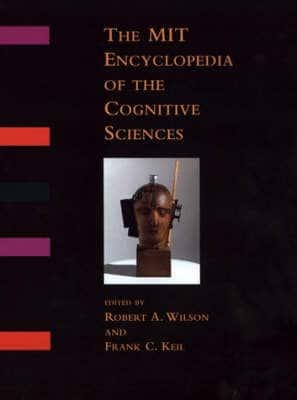
3:16: Your research trajectory has brought it all back home when you found out that your own University in Alberta had been involved in a eugenics scandal. What was this and did it make a difference to how you approached thinking about the subject? Did it become something more personal and emotional and less like a puzzle to be solved by the powers of your analytic philosophical training? Was Leilani important to how you approached philosophy itself as well as this particular issue?
RW: I noted that I came to know a small number of eugenics survivors in Alberta, including Leilani Muir, fairly well over the years, something that made my interest in eugenics more than academic. The flip side of that personalization was finding out that the founding chair of my then-department at the University of Alberta, John MacEachran, had run the four-person Alberta Eugenics Board from 1928 until 1965—i.e., for all of its history except the final seven years. The reason that was a scandal was that in 1996, Madame Justice Veit found in favor of Leilani’s lawsuit against the Province of Alberta for wrongful confinement and sterilization. The chief, general ground for the finding was that the Eugenics Board had systematically failed to follow the Sexual Sterilization Act of Alberta, to keep up with standard knowledge of the time, and to respect the basic rights of those vulnerable individuals that they were supposed to protect, in some sense. Following Leilani’s lawsuit, over 900 plaintiffs filed similar lawsuits, and by 2001 nearly all of these had been settled by the plaintiffs. This had become well-known between 1995 and 2000 in Alberta, since Leilani’s case was a landmark legal finding and the lawsuits themselves unprecedented in Canada. I discovered all of this only the year after arriving in Alberta through my teaching of students whose families had been directly affected by sexual sterilization.
So both of these dimensions to the Alberta situation—friendships with survivors and working in a department headed by MacEachran just one generation earlier, shaped my take on eugenics. And it fired me up to share those stories empathetically while also publicly acknowledging the shameful role that the university at which I was employed had played in the history of eugenics in Canada.
3:16: And what were the key elements you discovered that allowed eugenics to thrive even in a modern university institution full of the bright and the best (sic)? Is the notion of an ‘engaged individuality’ that you draw on as a term of art in the discussion something that you think would help prevent something like this happening elsewhere?
RW: There’s no magic explanatory bullet here, though I have been thinking for a number of years about what has allowed eugenics to thrive in a variety of disparate and perhaps unexpected contexts—after the end of the Second World War, in contemporary democracies, through the exercise of individual reproductive rights, or, as in the case of Alberta, under the direction of a professor of philosophy and Provost. Some of this I put under the heading of understanding the social mechanicsof eugenics. Although I don’t have any deeply satisfying answers, the general ballpark that I have been playing in advocates taking a mixed psycho-social perspective on the question. I think that the dominant conventionalist or social constructivist view of eugenics, whereby eugenics was co-constructed with the notion of normalcy that I alluded to earlier (the work of Leonard Davis, for example), doesn’t do enough by way of acknowledging some of the psychological tendencies that mesh with social and technological circumstance arising in the second half of the 19th-century. I posit that we have “like us” detectors that come to operate on various different kinds of people and try to avoid reducing “the social” to “the psychological” by making it clear that the latter is already constituted by the former. That gets cashed out in terms of the view of extended cognition that I have been hawking in the philosophy of mind and cognitive science since the early 1990s.
I introduced “engaged individuality” primarily to descriptively capture the fully human potential that the eugenics survivors I know showed: they are full of just the kinds of values, desires, and feelings that all of us have, although for those who were classified as “mentally defective” or “feebleminded”, this engaged individuality was ignored. That engaged individuality comes out vividly in face-to-face interactions. We sought to capture a slice of that engaged individuality in the narratives constructed in the “Our Stories” node of the EugenicsArchive.ca website, as well as in the film “Surviving Eugenics”. What struck me in addition was that the very people who failed to recognize this engaged individuality in the people they were passing judgement on—people like John MacEachran, chair of both the Alberta Eugenics Board and the Department of Philosophy at the University of Alberta—seemed to lack a display of that very characteristic.
3:16: What was distinctive about the Sexual Sterilization Act – did it link with sterilization programmes in India, California and Australia or was it something else?
RW: Eugenic sterilization in Canada can be seen informatively as part of the broader eugenics movement in North America before the Second World War; Australia was more clearly influenced by Great Britain, where they never passed sexual sterilization laws, while eugenic sterilization came to India much later, in the 1970s, under Indira Gandhi’s emergency proclamation and against the background of a perceived population explosion. So we have three distinct moments here in eugenic history. Let me concentrate on the Alberta case, which I know best.
The Sexual Sterilization Act of Alberta came into law in 1928 and was repealed only in 1972, undergoing important amendments in 1937 and 1942. Alberta was one of just two Canadian provinces to pass such eugenic sterilization laws, though roughly two-thirds of American states did so. Albertan legislators were very much aware of US state laws, but the legislation in Alberta was distinctive in a number of ways. First, the 1928 law applied to any person institutionalized in a “mental hospital”; there was no further trait—what I call a eugenic trait—that the candidate for sterilization needed to manifest or show evidence of. Only a small number of jurisdictions, including Indiana, California, and North Carolina, allowed institutionalization itself to serve, in effect, as a eugenic trait. What this did was empower individuals (like medical superintendents) and groups (like eugenics review boards) to wield relatively unconstrained power over the decision to sterilize. This contributed to high rates of sterilization; all four jurisdictions named above had very high rates of sterilization.
But the original Alberta law also required consent for sterilization. Finding this a barrier to achieving desirable rates of sterilization, the Alberta government introduced the 1937 amendment, including the distinction between “psychotic persons” and “mental defectives” and requiring consent only in the former case. When coupled with the other change in the amendment, which allowed recommending institutions to include travelling “mental hygiene clinics”, this in effect meant that children, who were largely the targets of these changes, could be more readily approved for sterilization. And they were.
Alberta’s original legislation was also cast in terms of a phrase that is unique across the nearly 80 eugenic sterilization statutes (original and amended) you find in the first half of the twentieth-century in North America. The law said that you could discharge a patient “if the danger of procreation with its attendant risk of multiplication of the evil by transmission of the disability to progeny were eliminated”. This is one of the few places that the term “disability” appears in eugenic sterilization laws in North America, and the only one that specifies the meliorative goal aimed at in terms of the removal of evil.
The last amendment to the SSA, in 1942, was distinctive in adding three further eugenic traits—apart from psychotic and mentally defective, introduced in 1937—as the basis for sterilization: neurosyphilis, Huntington’s, and epilepsy. Neurosyphilis and Huntington’s you don’t find in any other North American jurisdiction. And from the mid-1930’s scientific consensus was emerging that epilepsy, although a widespread feature of earlier sterilization laws, really shouldn’t be on the list of eugenic traits. Here I think Alberta was more than just out of touch with the science of the day. It was bumbling along with eugenic business as usual in the heyday of the extremes of Nazi eugenics.
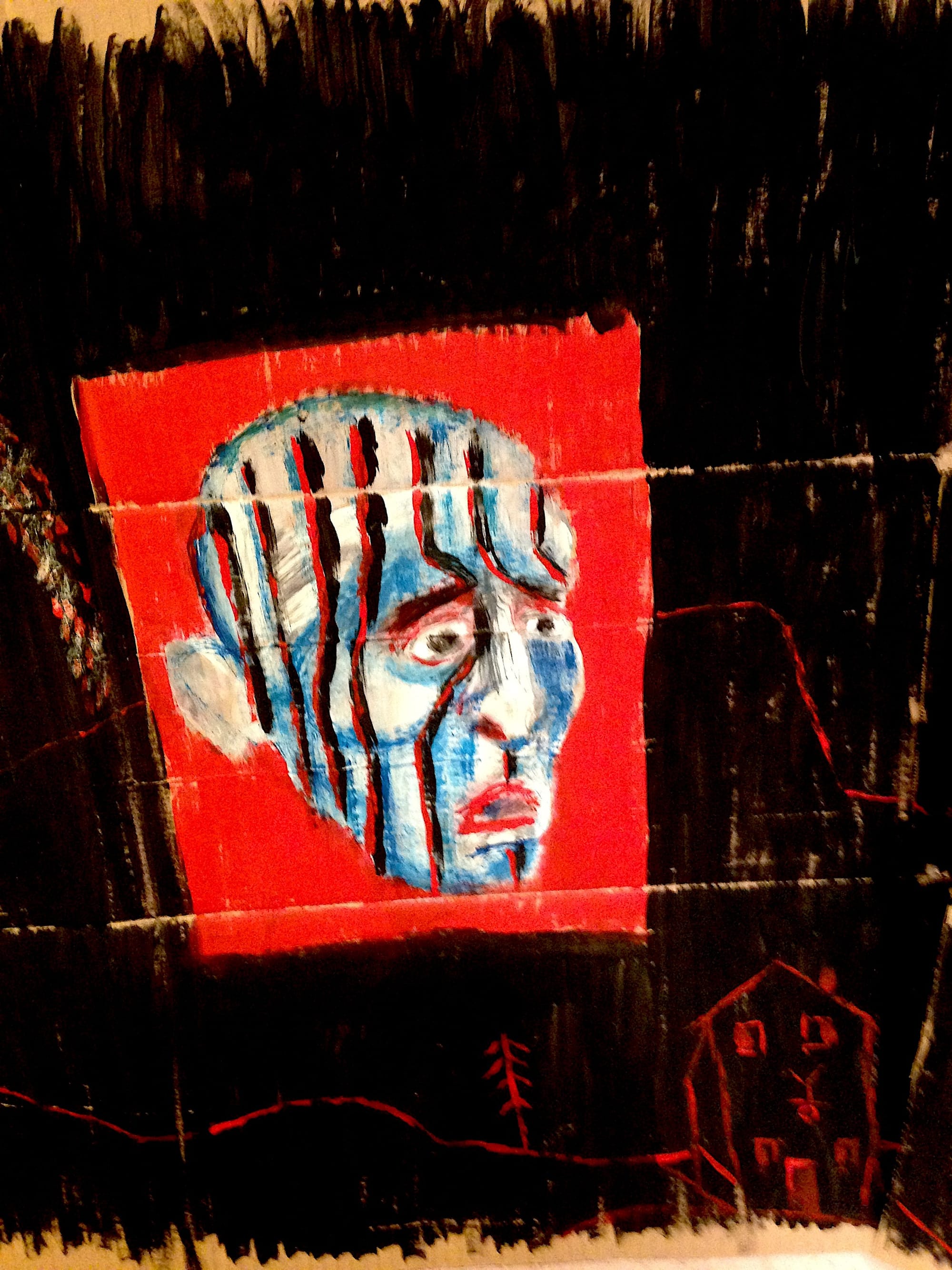
3:16: In what ways did the Living Archives project help you come to think about eugenics survivorship?
RW: Well, first up there’s the label itself. Prior to the Living Archives project, I (along with most others) would have talked readily of “sterilization victims”, rather than “eugenics survivors”, and the twofold shift here may be worth commenting on. As is known from other contexts—sexual crimes or ethnically-based genocide being the best-known—shifting from conceptualizing people in terms of something done to them (“victim”) to thinking of them via a forward-looking dimension to their life experience (“survivor”) is itself a healthy counter to dehumanizing tendencies. Much the same is true of the shift from “sterilization” to “eugenic” as adjectival modifiers. I see this as a legacy of adopting a standpoint eugenics.
That concerns “the how” of standpoint eugenics, if you like. But there’s also a “who” part: just who counts as a eugenics survivor or even someone who can occupy the corresponding standpoint. As the project developed, we saw a strong identification with people like Leilani Muir, Glenn Sinclair, and Judy Lytton by those one or even two generations younger than them who grew up largely in the post-eugenic era in Canada (i.e., after 1972). Their stories seemed to bring out aspects of contemporary living with disability that were resonant with that eugenic past, and so it made sense to broaden the category of a eugenics survivor accordingly. This itself made the connection between past and present deeper than we had anticipated, something that also shaped up the public engagement dimension to the project in the audiences for talks, panels, symposia, plays, and films we sponsored and contributed to creating.
It’s also important to note the kind of positive effect that the work that the Living Archives project had for eugenics survivors themselves. They came to see their individual video stories, which they were centrally involved in creating for many months, as valuable both in their own right and as part of a collective effort to educate people about the eugenic past. All of us being on a relatively coherent team that showed due care for each other helped massively in working through some of the complexities that arise in narrating an uneasy past.
3:16: So why don’t you think it’s a good idea to think that a child would be better if not born disabled on the grounds of the principle of Procreative Beneficence? Why should adopt a much more humble attitude to issues of disability and well-being generally? Does this link with your arguments coming out of your standpoint-eugenics approach to issues?
RW: The Principle of Procreative Beneficence concerns parental reasons for choosing between “possible children”: choose the one whose life you can reasonably expect to go best (or at least not worse than any other). It links to disability via the widely held view that a life with disability makes someone worse off. It’s pretty common for philosophers and bioethicists to cash out the ideas of better and worse lives in terms of the notions of well-being and quality of life.
One problem here is that, when you turn to the empirical literature featuring data on well-being and quality of life, the self-reports from people with disability depart from the widely held view that disability lowers well-being. This view simply isn’t true, in any straightforward sense, as philosophers of disability such as Ron Amundson and Elizabeth Barnes have noted (for a while, in Ron’s case). There are nuances here, of course. People report lower levels of well-being in the period immediately following the acquisition of a substantial disability, and they often report that the most important inhibitors to life satisfaction concern discrimination and human-built barriers to a full social and working life. And we need to work through the distinction between subjective and objective well-being, and varying accounts of each of these as well.
But what has interested me especially here is the initial negligence or selective treatment of this literature by bioethicists, as well as responses to the largely projected dialectic here from philosophers assuming the commonly held view to be true. Rather than listening to the voices of people with disabilities, these responses have focused on strategies of dismissal of those self-reports. People with disabilities have adapted preferences, meaning they are prepared to settle for less in life. Or people with disabilities simply aren’t able to recognize just how low their overall level of well-being is, since they haven’t experienced certain “objective goods” or “higher pleasures”.
The parallels here with views of women and people of African heritage (e.g., African Americans) are informative, both considered historically—their self-reports about the good life were also dismissed in eras where sexism and racism were overt in high culture—and also contemporarily: do women and people of African heritage have adapted preferences? I trust that it is clear that this route to dismissing or explaining away self-reports of high quality of life from these folks would be seen minimally as patronizing and hubristic and as giving off whiffs of the sexism and racism of the past. It’s striking that this is nothow things are regarded in the bioethics and philosophical communities in which corresponding appeals in the case of disability have consumed much oxygen. Here I think a little humility would go a long way. In this case, taking the perspective of those most affected by disability should shift the centre of gravity in these debates.
So despite both procreative beneficence and the common view of disability and well-being having considerable intuitive pull, they can’t be put together in this way to support the “better to be disability free” conclusion. Matt Barker and I have a crack at spelling out why in more detail in our recent “Well-Being, Disability, and Choosing Children” (Mind128 [April 2019], 305-328).
3:16: You’ve argued that culture first, conventionalist accounts of social taboos shouldn’t be taken as good accounts of a phenomenon if the taboo is rooted in biology. Incest avoidance is the parade case in this. What are the reasons for avoiding the anthropological, cultural approach to explain incest?
RW: A bit like my recent stuff on disability and well-being, my work on incest avoidance butts up against some dominant disciplinary trends. In anthropology, there’s a long tradition of thinking of incest as natural in at least two senses: it is found ubiquitously in the non-human animal world, and it stems in our own species from “primitive societies” that had promiscuous systems of marriage. While the second of these views was largely abandoned along with the more general primitivism of which it was a part, the first persisted through the last part of the 20th-century. It is reflected in Levi-Strauss’s view that incest avoidance demarcates cultural humans from merely biological beasts. The idea is that incest avoidance comes about primarily (only?) through invented cultural rules, taboos.
One reason to reject this view is that it rests on a false view of the nonhuman animal world. In the 250+ species that make up the Primate order to which Homo sapiens belongs, incest avoidance is systematic and widespread. Sufficiently so, it seems, to justify the view that there are shared mechanisms for some forms of incest avoidance across the order, and that some of these are homologous mechanisms, being inherited from a common ancestor. If that is true, then incest avoidance doesn’t rest on cultural rules and isn’t what marks us off from mere beasts.
And again a bit like my thinking about disability and well-being, what intrigues me here is the initial disciplinary neglect of the relevant primate literature, followed by a kind of reactive denial to its significance, once noted. For example: nonhuman primates, so the response goes, only have inbreeding avoidance, not incest avoidance, since they lack the concept of incest or the social rules constitutive of kinship. There no doubt is a lot about incest and its avoidance that is informed by culture. But ignoring or denying the significance of empirical literature when it doesn’t turn out the way your views presuppose isn’t a good start to building corresponding cultural explanations.
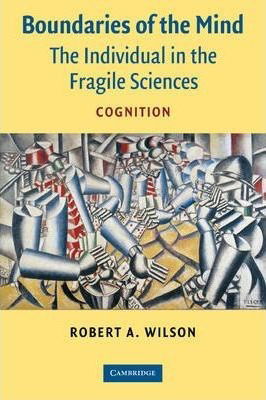
3:16: I remember back in the 80’s sociobiology was big but it often sounded like it embodied the bad attitudes your work on eugenics analyses. You have also theorized a way of integrating biological with social features when looking at kinship. So how does this work – and how would you characterize the best way of understanding the link between biological and social features?
RW: My disciplinary intrigue about cultural anthropology’s default view of incest avoidance is part of a broader attempt to understand the biological and social dimensions to kinship. On the one hand, my ongoing work here aims to complete the “individual in the fragile sciences” project that began with cognition in Boundaries of the Mind (2004) and continued with biology in Genes and the Agents of Life (2005). Now it’s a matter of seeing how the emerging themes play out with respect to sociality, of which kinship is a major form. A couple of recent papers I have in anthropology journals (American Anthropologistand Anthropological Theory) give some idea of the broader issues in play.
Part of this work is critical—basically taking on the prevalent view that kinship isn’t biological (at all, or only in “Western” societies)—and part is constructive, providing a more integrative view of biological and social dimensions to kinship. One thing I help myself to is a popular view of natural kinds, the homeostatic property cluster view conjured up by Richard Boyd. The simple idea is that kinship is a HPC kind featuring both biological and social properties in the cluster. This view supports what I have called bioessentialismabout kinship—the view that biological, reproductive, and genealogical properties play an asymmetrical role in kinship—if the structure of this cluster manifests such an asymmetry. I think it does, but the argument for that is still doing the rounds in the philosophical underground. For the record, I expect the resulting view to be quite antithetical to traditional essentialism, as well as to the reductionism usually associated with sociobiology!
3:16: Why are John Locke’s views on relations becoming important and helping to create what you call ‘an important trading ground between anthropology and philosophy’ – in particular one that goes beyond claims of anthropologists Marshall Sahlins and Marilyn Strathern?
RW: There’s nothing too deep here, other than the fact that Sahlins and Strathern, both contemporary figures in cultural anthropology whose work on kinship has been influential, have drawn on Locke’s views directly to support a kind of conventionalist or culturalist view of kinship. I think they get Locke wrong on key points in ways that show up some problems in the views they defend. And they fall in to some of the same traps as Locke did in shifting between relations (which are in the world) and ideas of relations (which are in the mind), a variant on the classic idea-quality shift that is the bane of serious Locke scholars.
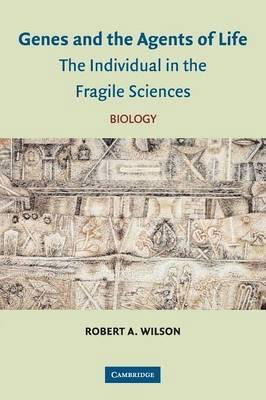
3:16: You’ve looked at recent research regarding the collective intentionality in non-human animals like dogs and drawn conclusions from it that challenge the shared philosophical perspective on collective intentionality found in, say, Searle and Tomasello . So what’s the commonly held view that is being challenged, and what is the research showing us?
RW: The perspective that Searle and Tomasello share on collective intentionality is an anthropocentric one: collective intentionality is something the humans have that nonhuman animals lack. For Searle, this is because collective intentionality involves the shared acceptance or recognition of what he calls “status functions”, which animals lack. For Tomasello, this is because collective intentionality rests on joint attention, which is distinctively human. In both cases, collective intentionality rests on fairly enriched individual-level cognition, and I think both views are individualistic in a stronger sense: collective intentionality can be explained, ultimately, in terms of the sophisticated intentionality of individuals, what some have called “we intentionality”.
My main challenge to this kind of view is more philosophically than empirically driven, although I do think that canine activities like social play and territory marking pose problems for both Searle and Tomasello, since they exemplify collective intentionality that is something less than full-blown we-intentionality. The main idea here is that highly social creatures (like dogs, but also like nonhuman primates who groom and fruit bats that engage in food-sharing practices) can engage in collective actions without having anything like the level of individual cognitive sophistication that both Searle and Tomasello think is requisite. Basically, I think that the dominant way of thinking about collective intentionality is mistakenly individualistic and individually demanding, and it’s not an easy matter to adjust that thinking just by lowering the bar, so to speak.
3:16: You’ve also looked at issues around collaborative remembering and the links with the broader issue of memory and the way it is understood in Western culture. So what’s the relationship as you see it between collaborative memory and collective intentionality and group-level cognizing – and what does recent work on eugenics survivorship tell us about the politics of collective remembering?
RW: Work on collaborative remembering has taken off in both the social sciences and in psychology in the last 15 years or so and the different research traditions here have (pleasingly) come into conversation with one another in interesting ways. Historians have taken “collective memory” as an important concept in accounts of traumatic historical episodes, such as genocide, and have explored ways in which oral histories are typically more than self-contained individual stories. There’s a clear meliorative dimension to this work and it’s great to see experimental studies that look at how couples remember, or at how the ways in which individual rememberers draw on others and “evocative objects” in their environments coming in to play here.
This connects up with at least my take on the collective intentionality literature through questions about the relationship between individual and group-level cognition. Individual memory is typically substantially scaffolded in various ways and I think the best way to understand this is via the idea of extended cognition. Introducing extended cognition here allows one to deepen an abstract challenge to proponents of group-level cognition: show me an example of genuinegroup-level cognition that can’t be adequately viewed in terms of extended individual-level cognition. The historically most influential examples of “group minds”—the psychology of the crowd, as Gustav Le Bon would have it—doesn’t pass muster here. So despite being critical of Searle and Tomasello, I’m somewhat sympathetic to the idea that individual-level cognition might be all the cognition there is. And ditto for memory.
That said, there is something important about collective memory, and it concerns that meliorative dimension to the construction of narratives that reflect the past. Collective memory work provides a powerful opportunity to include voices that have not only been left out or not heard, but those that one might assume don’t exist at all. In some context, that might mean inserting those voices into the overall story, while in others, amplifying those voices so that other voices are mere background. This might be reflected in how you structure museum exhibits, how you organize public events of commemoration, or the naming and framing conventions you adopt in introducing those voices. My experience here is chiefly with eugenics survivors in Canada. But the sort of work that we did at EugenicsArchives.ca has had resonance, in the last few years that I have been back in Australia, with those working on Trans stories of reclamation and on our understanding of child removal practices imposed on Australia’s First Peoples.
3:16: And where do you stand on the idea of extended cognition and why is a giant water bug helpful?
RW: Extended cognition and I are old friends. I remember late in 1997, the year after I moved to the University of Illinois, heading down to St. Louis to give at talk at Washington University at Andy Clark’s invitation. I gave my “wide realization” talk, then circulating. At some point during the visit, Andy passed over a pre-publication copy of “The Extended Mind”. I liked it enough but didn’t think it said anything incredulously stareworthy. Steve Yablo’s “wide causation” paper was doing the rounds about the same time, I had “wide computationalism” out a few years earlier, and Andy’s earlier work in the mid-late 90s was cast in a similar vein. But the paper drew people in at the interface between traditional, analytic philosophy of mind and more empirically-driven cognitive science. It quickly rose to become a lightning rod for further discussions.
If we fast forward 10 years or so, the itch I wanted to scratch increasingly here was the way in which discussions of extended cognition were often conducted through a kind of mind-o-scope that directed the gaze exclusively to the mental. My thought was that if extended cognition was real, then it should be no different in kind than other sorts of extended biology. Like extended digestion, for example, which you see in critters like Lethocerus, the giant water bug. What Lethocerusdoes is this: before sucking up tasty things like grubs through its mouth, it injects them in their cocoons or nests with enzymes that perform the function of breaking down the animal tissues, much as the enzymes in the stomach do in other critters. In Lethocerus, the process of digestion extends in situ beyond the boundary of the individual giant water bug. So it is extended in just the sense that cognition is in many creatures, including us. Nothing mysterious about this and, for biologists at least, no problem. The physiologist Scott Turner’s The Extended Organism (2000) complements Richard Dawkins’ better-known The Extended Phenotype (1982) to show how readily this notion of biological extension can be developed amongst biologists. But psychologists, cognitive scientists, and philosophers of mind have done a whole lot more hand-wringing about extended cognition. So the giant water bug is helpful as a reminder that we are not alone. Biological and cognitive extension are ubiquitous, naturalistically kosher, and fun!
3:16: And finally, are there five books you could recommend to the readers here at 3:16 that will take us further into your philosophical world?
RW:
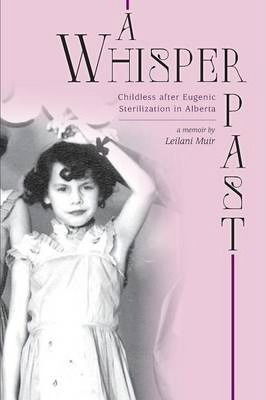
Leilani Muir’s memoir, A Whisper Past: Childless After Eugenic Sterilization (Friesen, 2014) is a courageously written, insightful, and difficult read, the first autobiography from a survivor of Alberta’s eugenics era.
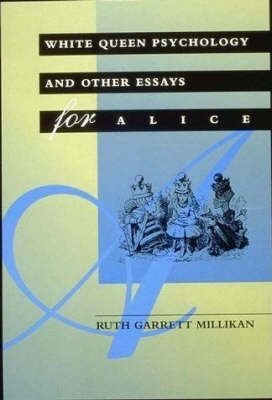
Ruth Millikan’s White Queen Psychology and Other Essays for Alice (MIT, 1993) collects her most influential papers and throws in a couple of then-new essays as well. These papers allowed folks working on mental representation, externalism, and biofunctions to get a better handle on Millikan’s Language, Thought, and Other Biological Categories(MIT, 1984).
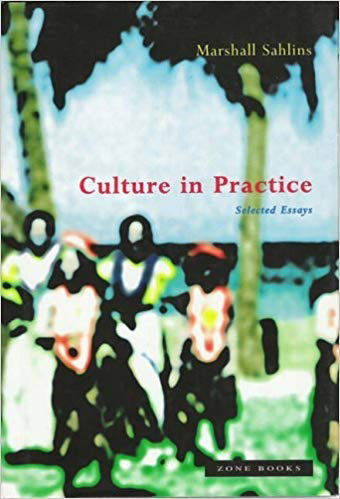
Marshall Sahlins was my way into cultural anthropology about 20 years ago, and the essays collected in his Culture in Practice (Zone Books, 2000) are representative of his wit, breadth, and depth.
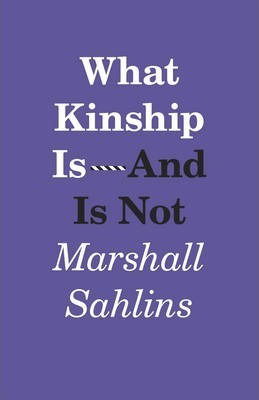
His recent What Kinship Is—And Is Not (University of Chicago, 2013) has become a bit of a stalking horse for my ongoing thinking about kinship.

The art historian and polymath James Elkins wrote almost a book a year for a while, and nearly all of them sparkle with insight about whatever their topic is. My favourite is The Domain of Images (Cornell, 2009), which focuses on non-art images, ranging from pictographs and writing systems through to microscopic and telescopic images used in sciences and is philosophically provocative.
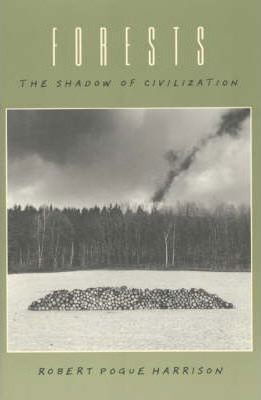
Other books I’ve found good for breaking disciplinary mindsets include a couple by the European literature scholar Robert Pogue Harrison. His Forests: The Shadow of Civilization (1992) is a deep reflection on the role and significance of forests in human history,
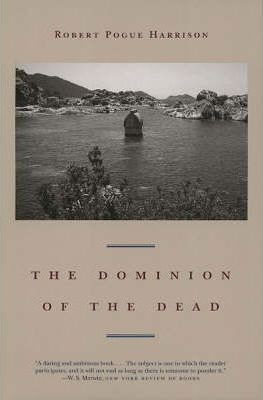
while his The Dominion of the Dead (2003), both with Chicago, does the same with death and those who have died.
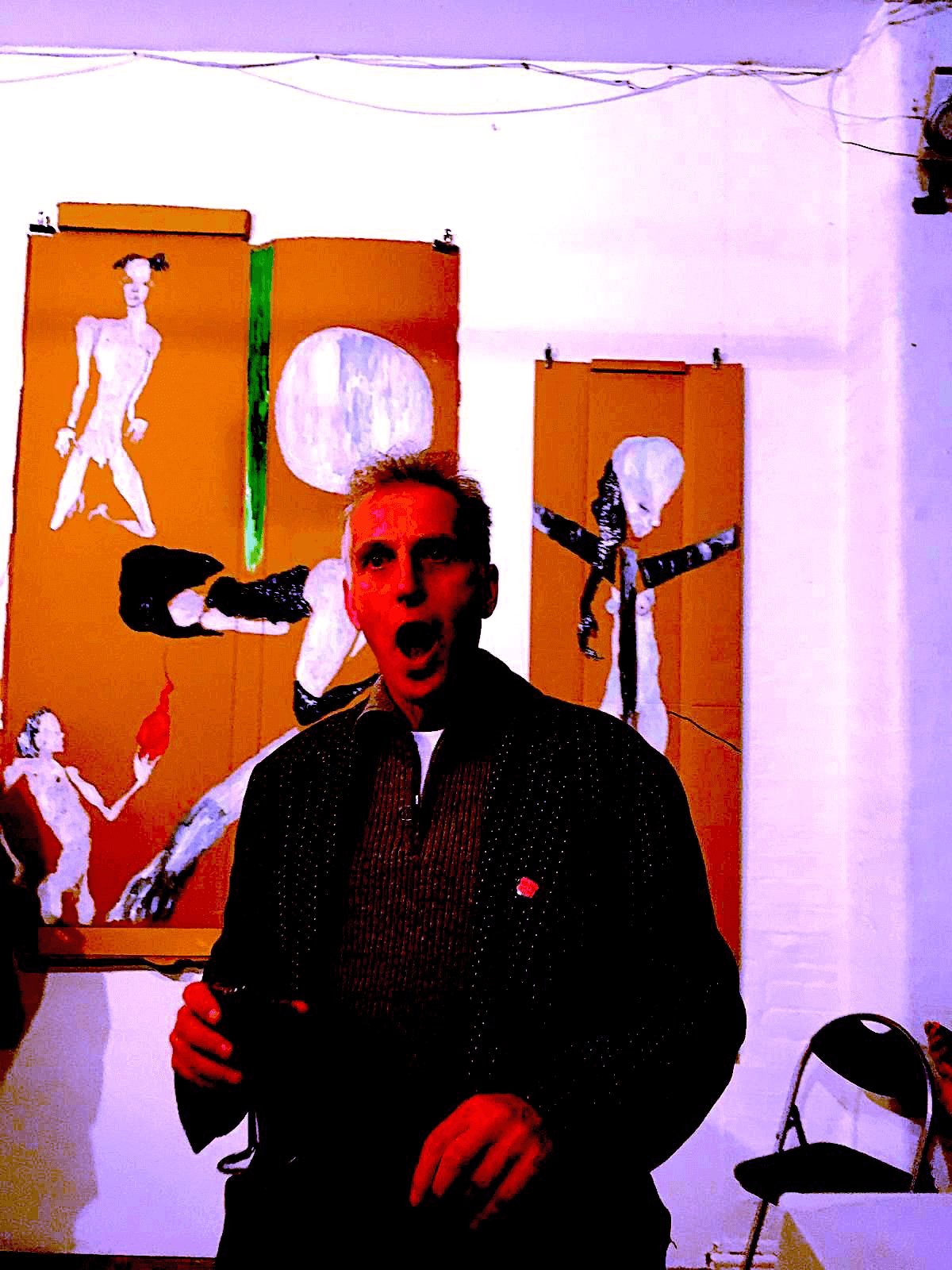
ABOUT THE INTERVIEWER
Richard Marshall is biding his time.
Buy his new book here or his first book here to keep him biding!
End Times Series: the index of interviewees